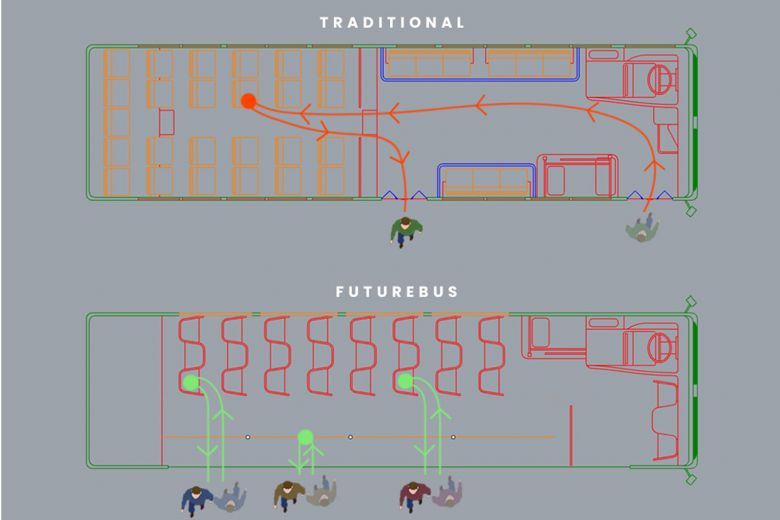Fill Me In
A 23-year old Singaporean student, along with three others, make up the winning four-member team that worked remotely to produce a new bus design that is “pandemic-proof”. The team won an international design competition called the FourC Challenge, organised by Shanghai Jiao Tong University.
How the award-winning design came about
The competition received more than 200 participating students from 52 universities, and they all competed in a 24-hour “design sprint”. The teams were set up randomly by the organisers, and they had to work together remotely for the competition.
Mr Ryan Teo worked together with three international students. The other three members include Mr Yang Shunli from Hong Kong Polytechnic University, Mr William Ma from Harvard University, and Mr Li Xin from Shanghai Jiao Tong University.
The group met only via Zoom and came up with the winning design in just 24 hours. The bus is named Futurebus, with notable features such as a sliding door that spans the full length of the bus, remote payment technology which deems physical card readers obsolete, and even a rotating handrail that is sterilised by an ultraviolet strip. The bus is also designed to enforce social distancing, where seats are arranged in a manner where no two commuters sitting side by side will face the same direction.
Designed with a pandemic in mind
Mr Teo mentioned that the design of Futurebus could potentially make public transport safer without lowering bus load capacity. Implementing social distancing on public transport would mean less load per vehicle, but the design of Futurebus counters the pandemic effect. Ryan Teo is a final-year product design and engineering student at Northwestern University, based in Illinois.
“It’s always been clear to me that Singapore has one of the best public transport systems in the world. That said, no system in the world is suited for a pandemic situation,“ said Mr Teo.
“Our Futurebus concept was designed with this in mind as we asked ourselves: How might we keep public transport safe without lowering the vehicle’s capacity?”
The team’s innovative and aptly-timed design won the 50,000 yuan (S$10,000) grand prize, and the bus design has garnered much media attention from various countries, including the United States, China, and Spain.
Technology implemented already available
The design of the bus was primarily adapted from technology that is already available. The rotating handrail was inspired by the Chicago O’Hare International Airport’s toilet seats, which rotates is cover after each usage. The Futurebus’ handrails were inspired and modified to fit the bus, which will rotate 360 degrees each time the vehicle reaches a bus stop so that the bar can disinfect itself without passengers having to adjust their grip.
The remote payment system that the team has incorporated in the bus design also already exists. Mr Teo cited a system developed by ST Engineering, which requires a commuter to carry only a long-range radio-frequency identification wristband, card or key tag. This method of remote-payment allows commuters to walk through a barrier-free frame and have their fare deducted automatically, all without having to come into contact with anything.
The vehicle’s unique long sliding door provides space for commuters and denies the need for crowding around narrow bus doors where card readers are usually located.
“We redesigned the floor plan of the bus to minimise passenger path-crossing,” Mr Teo said. “(This way), passengers can directly step off the bus instead of having to walk through the bus to get to the exit.”
Cocoon of semi-private space
The team had interviewed commuters and found a desire for private spaces in public vehicles. The bus seat design was amended to suit this preference. Seats on the Futurebus placed in alternating directions achieves a “cocoon of semi-private space” for each passenger.
When asked if Mr Teo hopes to see his design brought to life, he said, “Our design process was extremely rushed as we tried to fit what would normally take months or years, into just 24 hours. But I think pandemic-proofing should be considered as part of future design criteria as regular infrastructure improvements are made over the next few decades.”




























